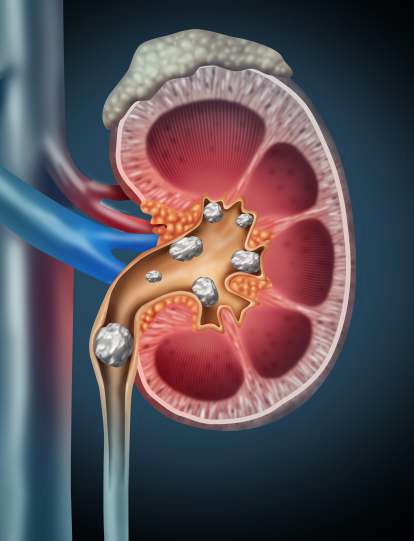Until a few decades ago, kidney stones were primarily associated with middle-aged white men. However, recent data reveals a concerning shift in the demographics affected by this painful condition. Today, kidney stones are increasingly being diagnosed in younger individuals, particularly during the summer season. The rise of kidney stones among teenagers, especially girls, has become a significant health concern.
Factors Contributing to the Trend
While the exact cause behind this unsettling trend remains unclear, experts propose several potential factors. One leading contender is the modern diet, characterized by high consumption of ultraprocessed foods. These foods often contain excessive sodium, which can force additional minerals into the urine, contributing to stone formation. Moreover, sweetened beverages high in fructose corn syrup may also increase the risk of kidney stones.
Another factor under scrutiny is the early use of antibiotics. Recent research suggests that certain oral antibiotics can disrupt the gut microbiome, creating an environment conducive to kidney stone development. Over-prescription of antibiotics, especially in the pediatric population, could be a significant contributor to the increase in kidney stones among younger individuals.
Additionally, climate change plays a role in the growing prevalence of kidney stones. Hotter summers lead to increased sweating and reduced urine output, allowing minerals to aggregate in the kidneys and urinary tract. Children, who are especially vulnerable to heat, may experience a higher risk of stone formation during the summer months.
The Impact on Children and Teens
The rising incidence of kidney stones among the young is alarming. For many children, kidney stones cause intense pain, bleeding, and discomfort. The condition can disrupt their daily activities, affecting school attendance and physical activities. Pediatric hospitals are now establishing specialized “stone clinics” to provide comprehensive care for children and teenagers dealing with kidney stones.
Research Initiatives
As medical professionals grapple with the increasing prevalence of kidney stones in the young, research efforts are in full swing. Studies are examining the correlation between dietary habits, antibiotic use, and kidney stone formation. By understanding the underlying causes, healthcare providers hope to develop effective preventive measures and treatment strategies.
The Importance of Early Intervention
Detecting kidney stones early is crucial to preventing complications and managing the condition effectively. Timely intervention can prevent stones from getting stuck in the urinary tract, minimizing pain and reducing the risk of long-term health issues. Children and teens diagnosed with kidney stones can benefit from personalized treatment plans that address their unique needs.
Preventive Measures
Maintaining proper hydration is key to preventing kidney stones. Encouraging children to drink plenty of water, especially during hot weather, can reduce the risk of stone formation. Monitoring urine color can be a simple yet effective way to gauge hydration levels – a light lemonade color indicates adequate hydration.
Future Implications
As healthcare professionals gain more insights into the factors contributing to the rise of kidney stones among the young, they hope to develop evidence-based guidelines for prevention and treatment. By identifying high-risk groups and implementing proactive measures, they aim to curb the escalating trend of kidney stones in younger individuals.
The increasing incidence of kidney stones among children and teenagers is a cause for concern in the medical community. The interplay of dietary habits, antibiotic use, and climate change appears to be contributing to this concerning trend. Timely detection, preventive measures, and ongoing research are critical to addressing the issue effectively. By understanding the factors involved, healthcare professionals hope to safeguard the health and well-being of the younger generation and mitigate the long-term impact of kidney stones.
Source: The information and data presented in this article have been sourced from NBC News.
















